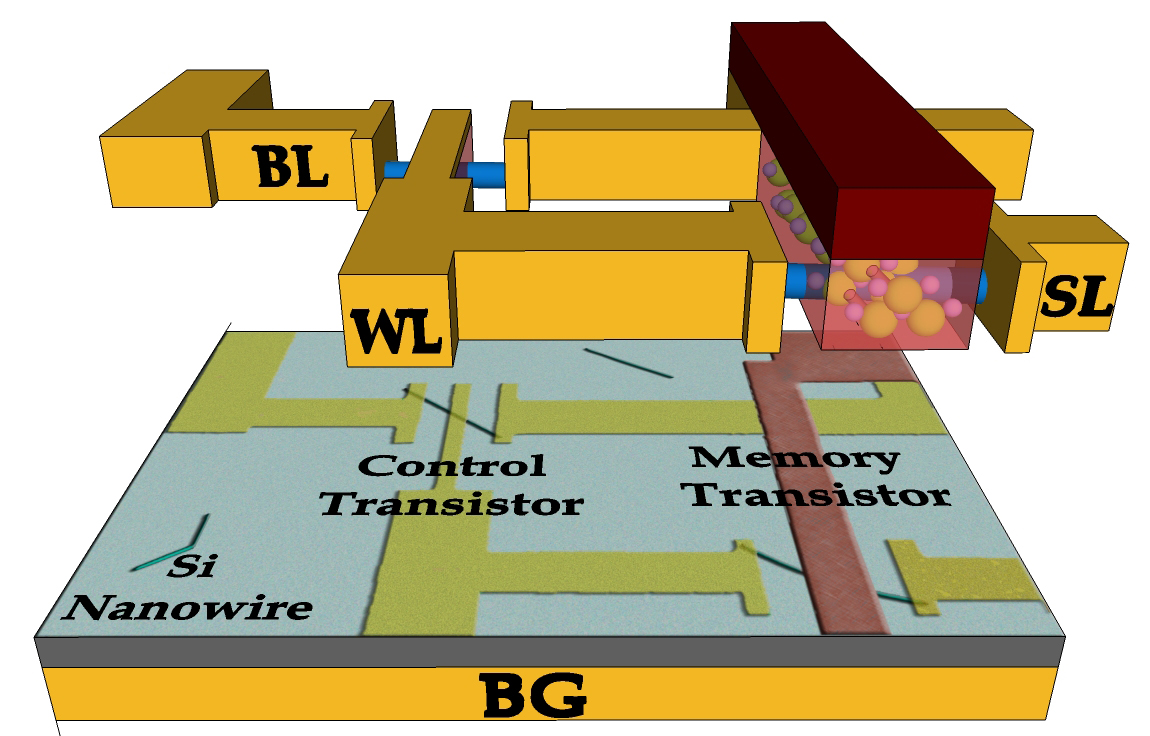New ‘FeTRAM’ memory uses 99 percent less energy than flash memory
September 28, 2011

Layout for FeTRAM, a new type of computer memory that could be far faster than the existing commercial memory and use far less power than flash memory devices (credit: Birck Nanotechnology Center, Purdue University)
A new type of nonvolatile computer memory that could be faster than the existing commercial memory and use far less power than flash memory devices is being developed at Purdue University’s Birck Nanotechnology Center.
The FeTRAM (ferroelectric transistor random access memory) technology combines silicon nanowires with a ferroelectric polymer, a material that switches polarity when electric fields are applied, making possible a new type of ferroelectric transistor. It has the potential to use 99 percent less energy than flash memory.
The FeTRAM technology fulfills the three basic functions of computer memory: to write information, read the information and hold it for a long period of time.
The new technology is compatible with standard CMOS chip technology and has the potential to replace conventional memory systems.
The FeTRAMs are similar to state-of-the-art ferroelectric random access memories, FeRAMs, which are in commercial use, but represent a relatively small part of the overall semiconductor market. Both use ferroelectric material to store information in a nonvolatile fashion. But unlike FeRAMS, the new technology allows for nondestructive readout, meaning information can be read without losing it, made possible by storing information using a ferroelectric transistor instead of the capacitor used in conventional FeRAMs.
Ref.: Saptarshi Das and Joerg Appenzeller, FETRAM. An Organic Ferroelectric Material Based Novel Random Access Memory Cell, Nano Letters, 2011; [DOI:10.1021/nl2023993]